The Fantastic Four: First Steps is a masterful introduction to Marvel’s First Family, successfully re-establishing the characters for a new generation while remaining incredibly faithful to the spirit of their comic book origins. The film brilliantly balances high-concept science fiction, cosmic-level threats, and the intimate family dynamics that have made the team so beloved for decades. In addition, director Matt Shakman packs an incredible amount of lore into the runtime, introducing not just the core four but also key allies, villains, and concepts that have defined their adventures for over sixty years. From the arrival of Galactus (Ralph Ineson) to the setup of the Future Foundation, The Fantastic Four: First Steps leaves audiences with a tantalizing glimpse into a much larger universe.
Videos by ComicBook.com
For viewers whose curiosity was sparked by The Fantastic Four: First Steps’ deep dive into Marvel mythology, the good news is that these stories have been explored in even greater detail across thousands of comics. As a result, the movie serves as the perfect gateway to some of the most imaginative and influential comic book runs ever published. Whether you were intrigued by the new Silver Surfer, the terrifying power of Galactus, or the complex rivalry between Reed Richards and Victor Von Doom, there is a perfect comic book waiting for you. This list offers seven essential reads that build directly on the foundation laid by The Fantastic Four: First Steps.
1) Silver Surfer Epic Collection: Freedom
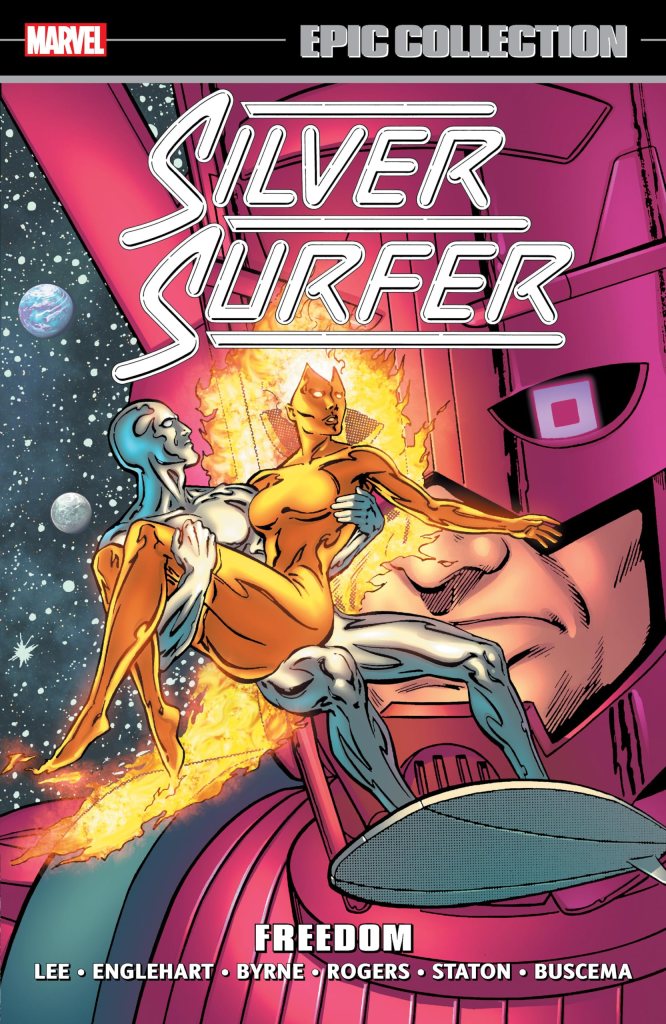
The Fantastic Four: First Steps makes a significant change to the lore by introducing Shalla-Bal (Julia Garner) as the Silver Surfer, the tragic Herald of Galactus. In the film, she is a noble soul forced to find worlds for her master to consume in order to spare her own planet, Zenn-La. Her internal conflict provides one of the movie’s most compelling emotional arcs, culminating in her sacrificing herself to push Galactus through a portal and save Earth. Order on Amazon
For those who want to explore the character of Shalla-Bal further, the best place to start is the Silver Surfer Epic Collection: Freedom. While this classic storyline from Steve Englehart and Marshall Rogers features Norrin Radd as the Surfer, it is centered on his return to Zenn-La and his tortured relationship with Shalla-Bal, who has become the empress of their planet. The book delves deep into their shared history, their tragic love, and the impossible choices they are forced to make. It perfectly complements the film by showing the depth of the life and love that Shalla-Bal sacrificed to become a Herald.
2) “The Galactus Trilogy”

The Fantastic Four: First Steps presents Galactus as a terrifying force of nature, a cosmic god whose hunger is a fundamental law of the universe rather than a simple act of villainy. First Steps captures the sheer scale of his power, showing him attempting to bargain for the life of Franklin Richards before being outsmarted by the Fantastic Four and banished to a distant part of the universe. The film also hints at Galactus’ tragic existence, confirming he has existed since before the creation of the universe and is cursed with an eternal hunger.
To witness the story that defined Galactus for all time, readers must turn to the iconic “The Galactus Trilogy” from Fantastic Four #48-50 by Stan Lee and Jack Kirby. This is the storyline where Galactus first arrived on Earth, introducing both him and the Silver Surfer (in his original Norrin Radd incarnation) to the Marvel Universe. It is a masterclass in cosmic storytelling that establishes the stakes of his arrival and the sense of awe and dread that surrounds him. This story remains the benchmark for cosmic comic book events and is essential reading for anyone who wants to understand why Galactus is one of the greatest villains ever created.
3) Fantastic Four by Jonathan Hickman: Volume 1
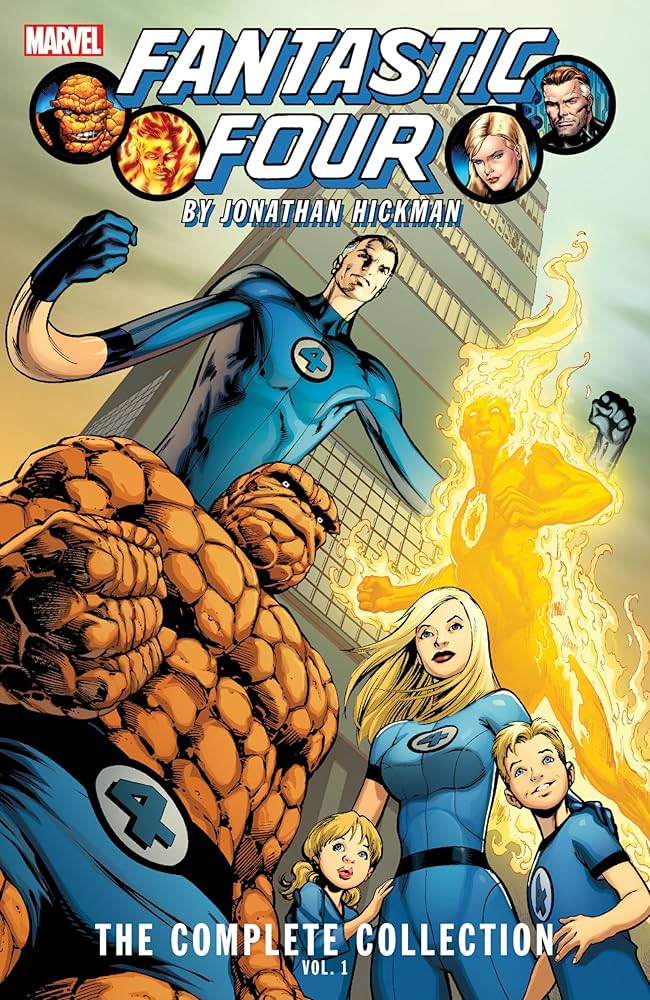
One of the most exciting plot points in The Fantastic Four: First Steps is the revelation of Franklin Richards’ power. After his mother, Sue Storm (Vanessa Kirby), collapses and dies from overexerting her powers against Galactus, the infant Franklin revives her with a single touch. Furthermore, the film establishes that Galactus was aware of the baby’s connection to the Power Cosmic and sought to exchange Earth’s survival for him, hinting at Franklin’s untapped potential.
The definitive exploration of Franklin’s god-tier abilities can be found in Jonathan Hickman’s monumental run on Fantastic Four, beginning with the collection titled Fantastic Four by Jonathan Hickman: Volume 1. Hickman’s story is a sweeping science-fiction epic that places the children, Franklin and Valeria, at the absolute center of the narrative. It follows Franklin as he grapples with his immense reality-warping abilities and his crucial role in a multiversal war. This run transforms him from a background character into a key player in the fate of all reality and is a must-read for anyone intrigued by the movie’s foreshadowing. Order on Amazon
4) Fantastic Four Vol. 1: Imaginauts

First Steps does an excellent job of portraying the team not just as superheroes, but as a family of adventurers and scientists. The film opens with a sequence showing their fateful mission into space, where their goal was the exploration of a new frontier. This theme is carried throughout the movie, as their first instinct when facing Galactus is to travel to his ship to negotiate, reinforcing their role as explorers charting the unknown.
This core concept is perfectly captured in Mark Waid and Mike Wieringo’s celebrated run on Fantastic Four, which begins with the trade paperback Fantastic Four Vol. 1: Imaginauts. Waid’s writing strips the team back to its core identity as a family of sci-fi adventurers, moving away from traditional superheroics to tell stories filled with wonder, imagination, and a deep sense of fun. The run is a love letter to the spirit of exploration that defined the team’s earliest adventures and is widely considered one of the best portrayals of the Fantastic Four ever written. Order on Amazon
5) Fantastic Four #1
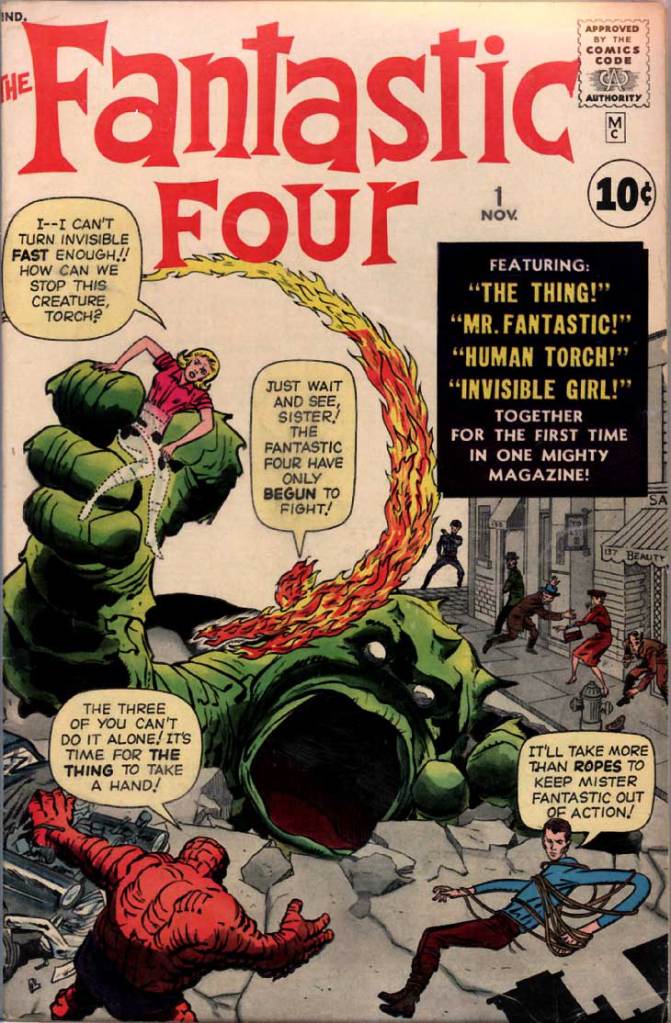
One of the team’s first antagonists in the film is the Mole Man (Paul Walter Hauser), the ruler of the subterranean kingdom beneath the Earth’s surface. In the movie, he serves as a more sympathetic figure, the ruler of a sovereign nation that eventually is convinced by Sue (Vanessa Kirby) to join the international efforts for world peace. While he does unleash a monster on New York in his first appearance, he is quickly established as an ally to the Fantastic Four rather than a true villain.
To see where the Mole Man’s story began, readers should pick up Fantastic Four #1 by Stan Lee and Jack Kirby. The team’s very first issue introduces the Mole Man and establishes the foundational elements of his character. While the comic version is more traditionally villainous, it tells the story of his shunning by society and his discovery of the realm of Subterranea, providing the core motivation for his war on the surface world. Reading this issue is not just a great way to understand the character, but also a chance to marvel at a piece of comic book history.
6) FF Vol. 1: Fantastic Faux

The Fantastic Four: First Steps explicitly sets up the Future Foundation when Sue Storm, addressing a group that includes an empty chair with a placard for the nation of Latveria, discusses her vision for the future. As founder of the organization, she establishes its mission of global peace and mentorship for the next generation, expanding the team’s purpose beyond simple exploration and into the realm of education and progress.
A perfect follow-up to this idea is FF Vol. 1: Fantastic Faux by Matt Fraction and Mike Allred. This series explores the Future Foundation in action, but with a unique twist. When Reed Richards decides the children of the Foundation need an educational trip through time and space, he recruits a replacement Fantastic Four to watch over them on Earth. This clever premise puts the focus squarely on the kids and the challenges of mentoring them, capturing the spirit of Sue’s vision from a fresh perspective. Allred’s vibrant, pop-art style gives the book a completely unique feel, making it a brilliant and fun exploration of the FF’s educational mission. Order on Amazon
7) Doctor Doom: Books of Doom
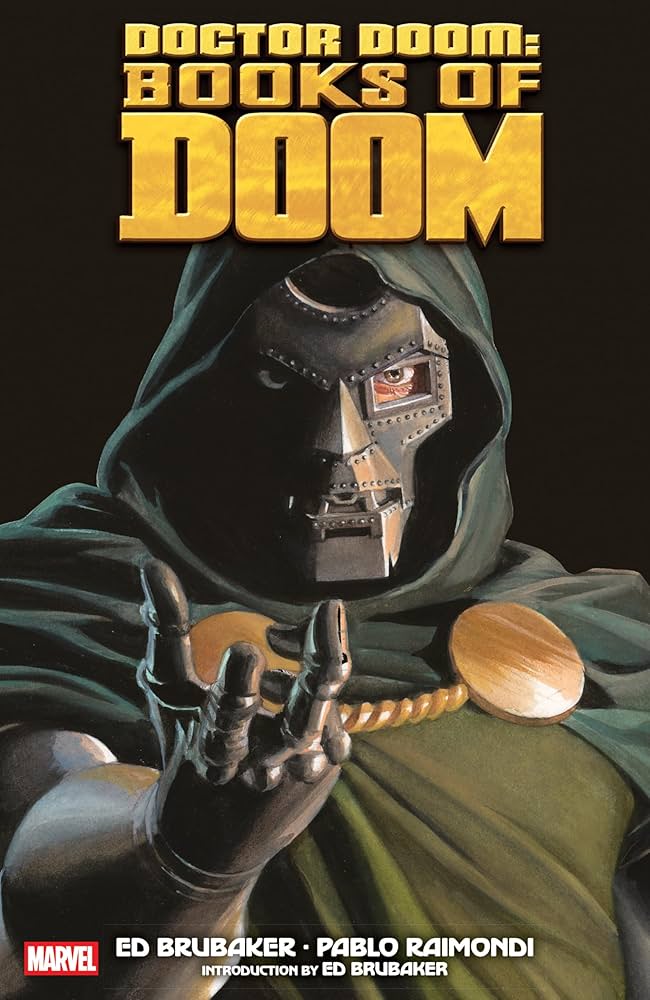
The post-credits scene of The Fantastic Four: First Steps provides a chilling introduction to Victor Von Doom (Robert Downey Jr.). In the scene, he appears before a young Franklin Richards, his face hidden from the camera but holding his iconic mask. While the film doesn’t show his origin, the earlier scene with the Latverian placard at the Future Foundation hints at his political power and his inevitable conflict with Reed Richards (Pedro Pascal).
For the definitive dive into Doom’s psyche, readers should seek out Books of Doom by Ed Brubaker and Pablo Raimondi. This six-issue series retells Doctor Doom’s entire origin story from his own perspective, framing him as the heroic protagonist of his own tragic tale, a brilliant man constantly undermined by the jealous and reckless Reed Richards. The series provides incredible depth to his character, making his hatred feel disturbingly justified from his point of view. As such, it is an essential read for anyone who wants to understand why this is the greatest rivalry in all of comics. Order on Amazon
The Fantastic Four: First Steps is currently available in theaters.
What other comic book would you recommend for fans of The Fantastic Four: First Steps? Share your picks in the comments!





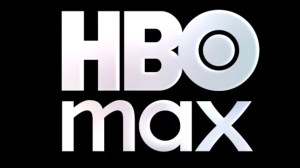

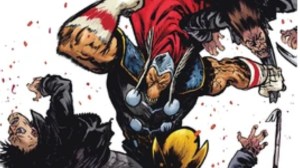
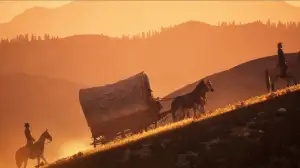
![Simu Liu Confirms The 2 Dream X-Men Shang-Chi Works With On Avengers: Doomsday [Exclusive]](https://comicbook.com/wp-content/uploads/sites/4/2025/12/Simu-Liu-Avengers-Doomsday-interview.jpg?w=300)